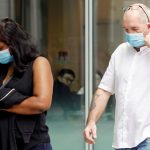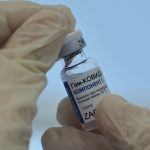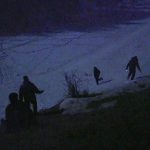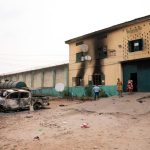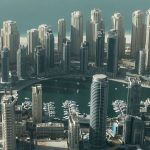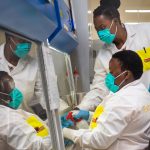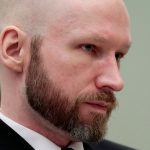Pop anthems blare out from speakers and people who have only just met each other dance together with the smell of a barbecue hanging in the air. There are distinct festival vibes, but this is no party.
For two weeks, protesters have laid siege to Canada’s capital city – a relatively small number of people when compared with coronavirus protests worldwide.
Even at their peak, there were only about 8,000 demonstrators. The most determined drove about 300 articulated lorries and pick-up trucks into the downtown district of Ottawa and refused to move them, despite repeated pleas from the government.
The so-called Freedom Convoy began last month as a protest against vaccine requirements for lorry drivers travelling across the border into the US.
But it has mushroomed into a movement with disparate aims and complaints, from anti-mask mandates to anti-government sentiment.
The parliament building with its gothic turrets provides the backdrop to a main road that is now inaccessible to other vehicles.
Shops and cafes in the area have been forced to close and some local people say they no longer feel safe, but protesters claim this occupation is a necessary act.
US authorities warn truckers could target Super Bowl inspired by protests on Canada border
Canada protests: From a loosely organised convoy of truckers to a resistance movement
Freedom Convoy: Why are Canadian truckers protesting and where else is their action affecting outside Ottawa?
Chris, a lorry driver from Huntsville, Ontario, says he hasn’t spoken to his dad in months because of disagreements over the vaccine.
“He told me I wasn’t worth our family name because I wouldn’t vaccinate my whole family, he very much disagrees with me being here. But I will stay as long as it takes. We’re well supported, food wise, fuel wise, financially, to be here until this government realises that the people are the ones that need to have the power.”
Local police think about 25% of the vehicles involved in the Ottawa protests may have children in them, which is complicating plans to disrupt the demonstration.
Ontario Premier Doug Ford pleaded with protesters to “take your children and go home”.
But many haven’t heeded his advice.
The Knight family brought their three children for the day.
“We haven’t been living here for two weeks,” their mother says, “But I think this is history in Canada, and this is an important thing for them to see and them to know. So I understand that Doug Ford has to say some things politically but as parents and as the decision makers for our family, we feel it’s really important that they see what’s happening here.”
As the protest enters its third weekend, the province of Ontario – where Ottawa is located – has declared a state of emergency, giving police additional powers to make arrests.
A judge also granted an injunction aimed at ending a blockade which has put a chokehold on the busiest land link between the US and Canada for the past three days.
The Ambassador Bridge – which links Detroit, Michigan in the US with Windsor, Ontario in Canada – is also being blocked by an offshoot group of protesters in lorries. They were told to clear the area by 7pm local time on Friday (12am UK time on Saturday) or face being arrested.
Canada’s Prime Minister Justin Trudeau is under pressure from the US to act quickly and decisively, but he ruled out bringing in the military for now.
“Everything is on the table because this unlawful activity has to end, and it will end,” Mr Trudeau said.
“We hope these people will decide to go home. Otherwise, there will be an increasingly robust police intervention.”


